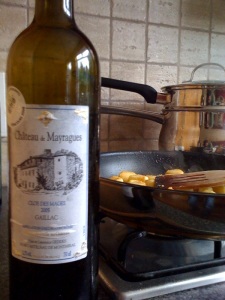Despite my repeated promises to leave the portfolio alone once it had been printed, there’s lots more new wines arriving at the moment! From Spain, we have two new whites which are just superb:
A new pretender to the throne of Spain’s greatest white wine grape in a Godello from Valdeorras – called “Tempestad” – rated 91 from Parker and retailing at €14.99 this is a great one to satisfy the anorak within.
Also, at the risk of going too far, we’ve got our hands on the wine that I consider to be the best white wine in Spain – Moraima Albarino – from Rias Baixas. There’s Albarino, and then there’s Albarino from ungrafted, 100 year old vines. Honestly this is up there as the best unoaked white I have ever had the pleasure of tasting.
From France, our best new friend Christophe Coquard showed us his 2009 Beaujolais Rose at ProWein and we fell in love with it – that will arrive next week along with his much awaited Bourgogne Chardonnay and Bourgogne Pinot Noir. Our old friends at Danielle de l’Ansee also dispatched the 2009 vintage of their deliciously good value Touraine Sauvignon Blanc which is arriving tomorrow. So keep your eyes peeled as we’re adding new wines and new vintages every week!

 Out of the frying pan, into my glass
Out of the frying pan, into my glass
